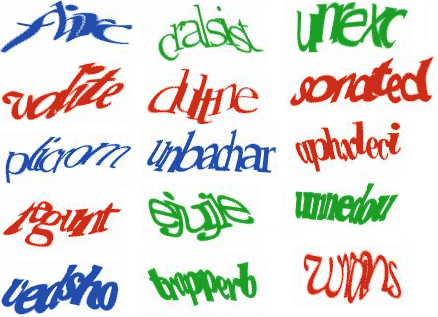CAPTCHAs, the strange collection of slightly obfuscated letters or numbers in a box near form submissions, are found on millions of websites. They’re a low tech way to prevent spam submissions since automated bots are unable to read most CAPTCHAs.
What exactly is a CAPTCHA, and why are they so ubiquitous today?
History of CAPTCHAs
CAPTCHA is an acronym for Completely Automated Public Turing test to tell Computers and Humans Apart. These tests date back to 1997 when they were invented to prevent spam submissions to the AltaVista search engine. The twisty text and strange background images we see today aren’t much different from those designed in the late 1990s.
There have been some technical improvements over the years attempting to make them easier for humans to solve without making it easy for bots. Some, like Google’s reCAPTCHA, have moved away from the obscure text and now rely on a number of other factors to determine if user is human or not.
Other companies have created more novel solutions, such as asking users to count the number of animals in an image, solving a simple logic puzzle, play a quick game, listen to an audio clip, or watch a video. The idea is to be a user-friendly as possible while still curbing spam.
Why Use CAPTCHAs?
Spam is a massive problem on the internet and extends far beyond e-mail. Spammers will register fake accounts on website, use contact forms for spam, attempt to hack accounts, and submit malicious information using an army of bots. If it weren’t for CAPTCHAs these bots could submit these forms over and over with nothing to stop them other than the website owner manually blocking the IP address.
CAPTCHAs provide an extra field of the form that must be completed for the form to be submitted. The data that this field requires is displayed in an image that is very difficult for a computer to automatically read. This stops the vast majority of spam submissions.
Implement CAPTCHAs on Your Website
If your have a blog or a website and you’re having problems with spam submissions on your contact form or in your comments section, you can use a CAPTCHA to stop the majority of the spam. It won’t stop those submitting the spam manually or bots using humans to solve the CAPTCHAs, but it will stop most of them.
Another incentive for webmasters is that the CAPTCHA can be another source of revenue for your site. Publishers can monetize their website with CAPTCHA advertising, so that the user is shown an advertisement instead of randomly generated text. For example, the user may be required to type in a brand name, watch a short video clip or find a branded product within an image. Website owners win since they can earn revenue while reducing spam and advertisers win since users are far more likely to interact with their ad than they would be in a traditional advertising model.
If you use the popular blogging platform WordPress, there are a number of plugins that you can use. Many don’t even require modification to your theme’s code. You simply activate the plugin and the CAPTCHAs are added automatically.
If you’re on a different platform or if you have a custom coded website, Google’s reCAPTCHA is easy to implement. You will need to sign up your website on their page and you will be given an API key. Then, follow their guide to add the form to your webpage. If you aren’t tech savvy, your developer can add it for you easily.
Someday, we will probably develop technology to completely eliminate the need for CAPTCHAs on most websites, but for now they’re a necessary evil to keep website administrators from going mad. The next time you struggle to solve a CAPTCHA on a website, don’t blame the creator blame the spam that makes CAPTCHAs necessary.
